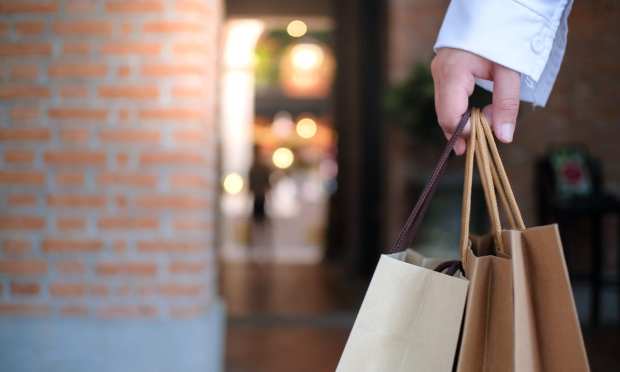Are We On The Cusp Of Roaring ’20s Retail Rebound Or A Long, Challenging Slog?

Given that consumer spending accounts for 70 percent of the U.S. economy, it’s safe to say the monthly reading on retail sales on Wednesday (Feb. 17) will offer a critical insight on the current state of American shoppers and businesses.
Although economists, on average, are forecasting a 1 percent rebound in January retail sales, the prior two reports have caught them by surprise. December unexpectedly dropped 0.7 percent, and November’s 1.4 percent slump was about 3x worse than consensus.
This is not a knock on economists, who have the unenviable job of trying to factor in impactful moving targets like stimulus checks in real time, but rather a caveat on the recent prediction track record.
That said, when the Commerce Department releases its January retail sales data at 8:30 a.m. Wednesday, economists and investors are looking to reverse that losing streak and deliver a 1 percent increase.
Data Versus Anecdotal
Whether the January headline number comes in on target, above or below expectations, the economic debate will not be taking a rest, as pundits and experts will instantly begin to calibrate how the trailing number will impact the actions of the Federal Reserve as well as lawmakers in Washington, D.C. who are working to finalize a third stimulus package.
For example, the December drop of 0.7 percent that came out Jan. 15 was impacted by a dramatic spike of third-wave COVID cases as well as protracted stimulus negotiations. The result was outsized declines in bellwether categories such as electronics and appliances (-4.9 percent) bars and restaurants (-4.5 percent) and general merchandise (-1.2 percent).
Of course, alongside the official government data, we will continue to get “front-line” retail reports from dozens of companies that are reporting their most recent earnings results, as well as commentary that sheds valuable light on important nuances including industries, regional variations and the impacts of the ongoing digital shift.
The Roaring ’20s Redux
One hundred years after the last global pandemic and subsequent market and economic rebound, L’Oréal — the world’s largest global fragrance and cosmetics company — rekindled the debate of a return to the roaring ’20s last week once COVID is in check.
“Let’s be positive again and optimistic. When the COVID [is] gone, people will be happy to go out again, to celebrate, to socialize and this will be like in the famous roaring 20s,” L’Oréal CEO and Chairman Jean-Paul Agon told analysts and investors. “This will be the fiesta of makeup and fragrances, by the way, so we are very, very positive.”
Although the firm’s total global sales fell 4 percent for the year, they were up almost 5 percent in the final three months, led by a 40 percent spike in its eCommerce business as well as a 4 percent increase in China, versus declines in every other geographic zone, including a 6 percent decline in North America and a 15 percent drop in Western Europe.
Even so, Deputy CEO Nicolas Hieronimus hammered home the French beauty company’s belief that better days are coming.
“We are confident that like in the roaring ’20s there will be a big beauty party once the pandemic is over and as a leader, we will make sure to cater for it,” Hieronimus said.
And it’s not just L’Oréal. In the past week, similar optimistic utterances were made by DICK’S Sporting Goods, which is adding more stores; Newell Brands, which said it sees its ‘“best days” ahead; and CarGurus, which said it expects to eclipse pre-COVID levels this year.
